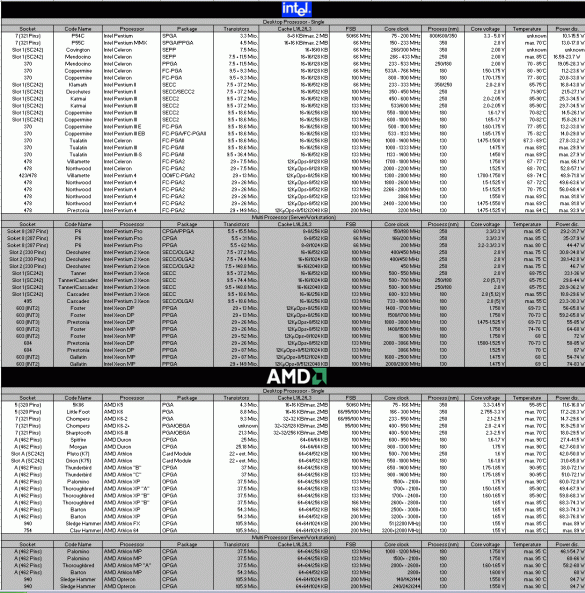AMD's and Intel's End-of-Year CPU Buyer's Guide
System Speed And Core Speed
Clever marketing specialists love showering us with jargon, superlatives and fantastic figures. No wonder that confusion about processor performance abounds. We take the lid off the matter.
Every processor works at a fixed clock speed, called the chip, or core, speed. Depending on the model, Intel's processors run at a maximum 3.2 GHz. AMD's fastest is a maximum 2.2 GHz. It should be noted that actual performance cannot be ascertained by the clock speed alone. Hence AMD tags a benchmark value to all its latest desktop processors relative to a Pentium 4 (e.g. an AthlonXP 3200+). More on this in the section on the AthlonXP.
Besides for the internal working speed, processors have to communicate with the outside world, too. The system bus or front side bus (FSB) handles this. Only the 64 bit Athlons use the serial HyperTransport protocol for this purpose; they have no front side bus as such.
High speeds in the gigahertzes only work over short distances, in other words, within the processor. Wherever long distances occur, such as along the conductor paths to the chipset, the speed is throttled - normally, by no more than 200 MHz.
Since this would create a substantial bottleneck, all of today's system buses use a couple of tricks: the double-data rate or quad-data rate processes. In the AthlonXP and all current DDR memory chips, data is transferred during rising and falling signal edges (dual data rate, DDR). For DDR that means that a physical speed of 200 MHz delivers the same data throughput as 400 MHz in single data operation. That's why AthlonXP is often billed as having "400 MHz" FSB speed and "DDR400" RAM. The Pentium 4 uses the quad data rate process, explaining the claim "800 MHz" FSB in the brochures.
The actual CPU speed is a product of the system speed. A 3.2 GHz Pentium 4, for example, premises a system speed of 200 MHz and a multiplier of 16.
The CPUs At A Glance

This table lists all current and discontinued processors since the first Pentium.
Stay on the Cutting Edge
Join the experts who read Tom's Hardware for the inside track on enthusiast PC tech news — and have for over 25 years. We'll send breaking news and in-depth reviews of CPUs, GPUs, AI, maker hardware and more straight to your inbox.
Current page: System Speed And Core Speed
Prev Page Buying A CPU: Performance Vs. Falling Prices Next Page The Standard: AMD AthlonXPMost Popular

